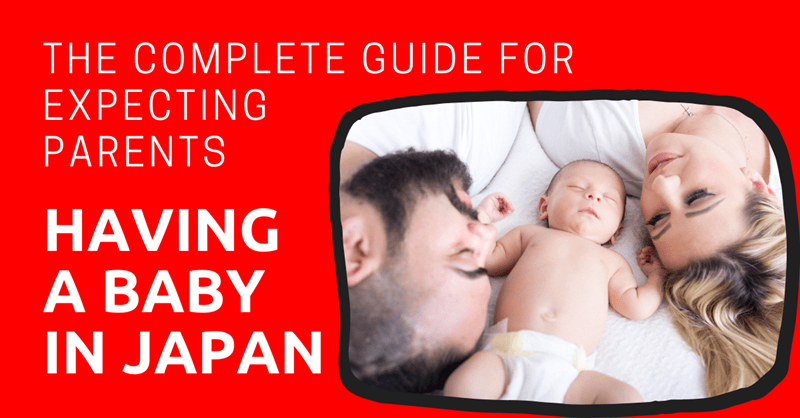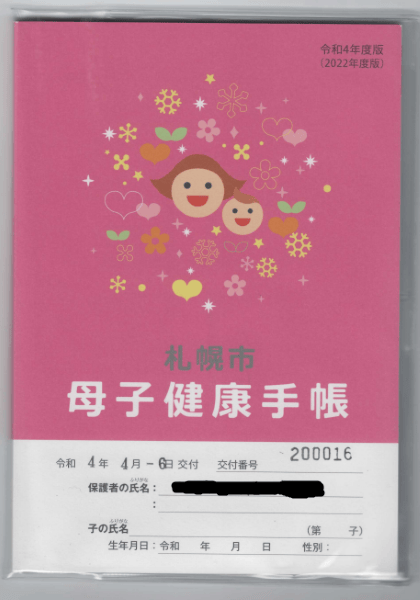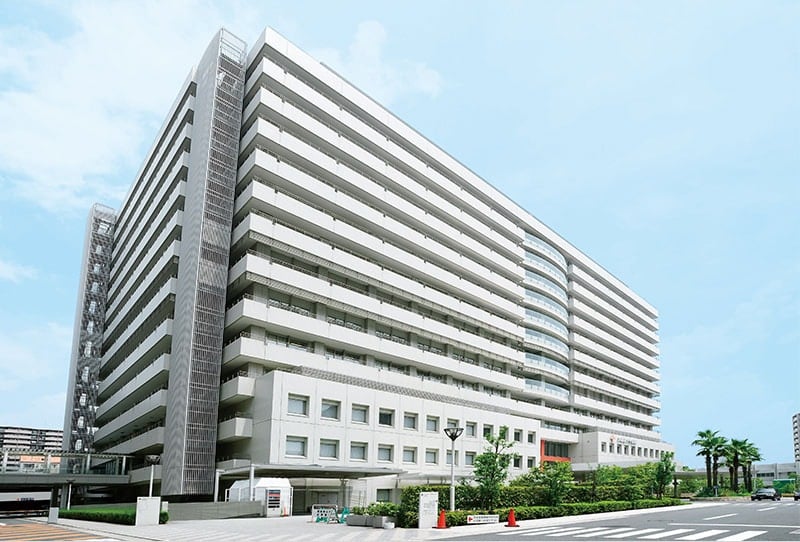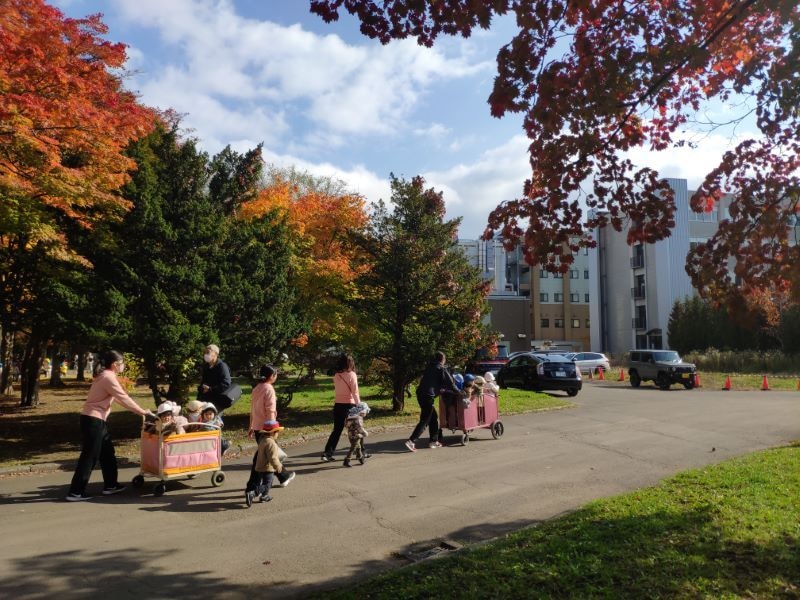
I am a father of two. All of my children were born in Japan.
It’s an amazing experience.
While navigating Japan’s healthcare system seems to be challenging for expats, having a baby here isn’t difficult. The entire process is very straightforward. You get a handbook that tells you what to do at each step.
In addition to that, you receive some assistance money from the Government that can significantly subsidize the cost of baby delivery. And after your child is born, you also get monetary assistance from the Government.
In this article, I will guide you through the process of what to do when you have a baby in Japan, from pregnancy test to choosing a hospital, prenatal checkups, and post-childbirth.
This article will take approximately 16 minutes to read. Don't have the time right now? No worries. You can email the ad-free version of the article to yourself and read it later!
Disclaimer: This article may include links to products or services offered by ExpatDen’s partners, which give us commissions when you click on them. Although this may influence how they appear in the text, we only recommend solutions that we would use in your situation. Read more in our Advertising Disclosure.
Contents
- Pregnancy Tests in Japan
- Verify the Pregnancy at a Local Clinic or Hospital
- Register Your Pregnancy
- Short Disclaimer About Prenatal Vitamins
- Prenatal Checkups
- NIPT
- The Cost to Have Your Baby Delivered
- Finding the Right Doctors
- Researching What Hospital is Right for You
- Packing Your Bag for the Hospital
- The Days After Delivery at the Hospital
- Home Country Citizenship and Birth Certificates
- Health Insurance for Your Baby and Monthly Assistance
- Now, on to You
Pregnancy Tests in Japan
In Japan, like many countries, you can easily get home pregnancy tests. You can buy them online or in person at any drug store without a prescription.
While the instructions are in Japanese, most pregnancy tests in Japan have picture instructions that are easy for anyone to follow. Some popular brands include: Check One, Hi Tester N, and Dotest.
For the majority of the home kits, they yield results in about 1 to 3 minutes and can be used at any time of day.
Once you get your result, it is advisable to immediately make an appointment at a clinic or hospital for official verification.
Verify the Pregnancy at a Local Clinic or Hospital
After you take your home test, you will want to get it officially confirmed by a medical professional. You can do this by making an appointment at a local OBGYN (ladies’ clinic), or a nearby hospital.
The doctor at your clinic will perform an ultrasound to verify the pregnancy, and once a heartbeat is detected, you will receive a pregnancy confirmation certificate (ninshin todoke).
The next thing you will need to do immediately is register your pregnancy at a local healthcare facility. We will talk a bit later about some of your options.
Register Your Pregnancy
You will need your pregnancy confirmation certificate and your foreign residence card.
Upon registration, you will receive 3 important items: Mother and Child Health handbook, coupon book, and pregnancy badge.
Mother and Child Health Handbook
The first is a “Mother and Child Health Handbook” (boshi kenkō techō), which is half comprehensive guide for mothers, and half health tracking journal.
This is a great example of a Child-raising guidebook that is given to English speakers in Hiroshima. Japanese citizens are required to write in this journal and track their own pregnancy; in fact, many doctors require that this journal be shown to them at each check-up you attend throughout your pregnancy.
This is especially the case if it is your first child.

Coupon Book
Secondly, you will get a coupon book to help offset the cost of your pregnancy health checkups (ninshin kenkō shinsa jushin hyō). It also helps with other prenatal care items you might need (diapers, milk formula, baby goods, etc.).
In addition to the coupon book, you will also receive a variety of pamphlets with recommendations on what products to buy, and tips for taking care of your health during pregnancy.
Pregnancy Badge
Last, you will get a pregnancy badge (maternity mark), which is used to signal to others that you are pregnant and may need additional care or seating on public transport.
This badge is usually displayed on the outside of your jacket, shirt, or bag so people can see it; it allows them to know that you are pregnant and to offer you their seat on a train, bus, or shinkansen if you are standing.
Short Disclaimer About Prenatal Vitamins
There is not a wide selection of prenatal vitamins available in Japan. I was surprised to find out that many Japanese women do not even consider taking them.
For our first baby, my wife and I decided that these were essential, so we ordered from a reputable brand from America.
Remember, when you order, you will have to order 7-8 months’ worth, so it can cost several hundred dollars (and import fees). I bought all of my vitamins from iHerb. They can deliver everything to Japan with no hassle.
Prenatal Checkups
Prenatal checkups are not covered by your Japanese Health Insurance, this is where the coupon packet that you already received will come into play.
Without these coupons, checkups can cost between ¥5,000 to ¥10,000 each.
On average, you will have about 14 checkups during pregnancy.
In the first and third trimesters, you can expect to have prenatal checkups roughly every other week. As your pregnancy progresses and you enter the second trimester, these appointments will be scheduled about once a month.
In the final stages of the pregnancy, these increase to every two days to closely monitor your baby’s well-being.
These prenatal visits do not take more than 1-2 hours, and there is minimal paperwork each visit, aside from your first initial visit. You will check in by an electronic check-in system at the reception desk.
Following this, routine tests, like a urine sample or blood test, will be performed. The vitals of the baby will then be checked, and your weight and blood pressure recorded.
The last part of the check-up is the doctor’s examination, which includes an ultrasound, followed by a brief discussion with your doctor.
Finally, you’ll conclude your visit by paying at the register. Many clinics in Japan only accept cash payment, so please keep this in mind before your visit.
Again, these payments will depend on what your coupon package includes and vary for each prefecture.
Here is a sample check-up schedule on what you can expect.
NIPT
During these checkups, you can request additional testing. Some parents opt to test for the possibility of Down syndrome with something called NIPT (Non-invasive Prenatal Testing).
You can learn about the associated risks or benefits of choosing to have this procedure done here.
I should note that these additional tests can have different costs and could require some time off work.
The Cost to Have Your Baby Delivered
The cost of the actual delivery rarely varies; getting your baby delivered is around ¥500,000, and this is the national average across prefectures. As it is not considered a sickness, it is not covered by your insurance.
Childbirth and Childcare Lump-sum Grant
The great news is that everyone who has a baby here gets a “grant” from the government.
The grant, known as the Childbirth and Childcare Lump-sum Grant, is for ¥420,000. It covers almost all of your expenses.
This situation changes if there are complications during birth.
For example, if you must have a C-section surgery; this would default to your insurance.
You would still get the grant, but the insurance would cover most of the birth.
In this more rare case, you would actually have a substantial amount of money left over from the grant, with very little out of pocket besides the insurance co-pay.
Remember, as a patient with insurance, you will only pay 30% coinsurance for the C-section.
Epidural
While many countries use an epidural to relieve the mother’s pain during childbirth, believe it or not, it is extremely uncommon in Japan.
My wife received one, but we had to schedule a specialist on the day of the birth months in advance with help from our hospital. Epidural anesthesia costs around ¥100,000 to ¥150,000, and this depends on whether it’s the first child or not.
Private Room
The choice of a private room in a hospital can also affect your overall costs.
Private rooms have amenities such as a private bathroom, couch, TV, and this can run about ¥10,000 or more a day. I want to add that it is completely worth the money.
It is customary in Japan for the woman to spend at least 3-5 days in the hospital with her baby before going home.
During that period of time, nurses take care of the baby throughout the day to help the mother not only heal from the birthing process but also to allow her to regain her strength.
Induced Labor
Induced labor can add to the cost, ranging from ¥20,000 to ¥30,000. These are a popular choice for many women in Japan.
Additional Fees
Also, keep in mind that deliveries that take place outside of regular hospital hours or on holidays might incur extra charges, between ¥20,000 and ¥30,000.
Other additional costs you want to consider are hospital amenities and special procedures surrounding giving birth.
Finding the Right Doctors
For expectant parents in Japan, finding the right doctor is crucial. Naturally, many foreigners prefer a doctor who can speak their native language, which unfortunately can be a challenge.
Honestly, you may have to go to a large city to find an English-speaking staff.
For example, Tokyo has plenty of hospitals and clinics that cater to foreign residents.
Language barrier aside, you will also want to consider the doctor’s policies on birth plans, pain relief during labor.
You will be relieved, though, that continuity of care is very common in Japan; the same doctor that provides prenatal care will often deliver the baby and perform postnatal checkups.
Researching What Hospital is Right for You
This might be dependent on what doctor you choose, but when researching hospitals for childbirth, keep in mind, private, public, and premium clinics have birth centers that each offer a different environment and services.
Private Hospitals (Maternity Hospitals)
Childbirth services at private hospitals in Japan are well-rounded.
Private hospitals have a comprehensive range of services for childbirth and focus much more on your comfort, with more personalized care. You will find that private hospitals have many different room options (Semi-private rooms, private rooms, and suites).
There are also accommodation options for the entire family; partners or family members can stay overnight with you.
Visiting Hours typically are from 9:00 am to 9:00 pm.
One of the reasons that many new mothers choose private hospitals is that they offer classes on the birth process (breathing exercises and couples’ courses), and education classes on how to take care of the baby after it is born.
Some private hospitals also employ chefs to provide delicious multi-course meals during your stay and give you complimentary gifts and baby amenities when you check out of the hospital.
Many of these hospitals are geared for childbirth and can be referred to as maternity hospitals.
Public Hospitals
In public hospitals, the patient experience can be a bit different. For example, during childbirth, you might have longer waiting times for checkups and less individualized attention.
The demerit of public hospitals is less access to specialized services for childbirth.
This is particularly the case for epidurals, which they may not offer at all.
Packing Your Bag for the Hospital
This is a list of what you need to pack ahead of time. It is important to prepare these things and make sure you have them ready to go in case you go into labor early.

For yourself, you will want to have:
- comfortable loose clothing
- Maternal and Child Health Handbook (Boshi Techo)
- health insurance card
- basic toiletries (hairbrush, toothpaste, soap, etc.)
- non-slip slippers or socks
You should also bring your own entertainment (magazines, iPad, etc.) and plenty of snacks and drinks.
For your new baby, you should bring:
- newborn diapers (enough for your entire stay)
- a “first outfit” (onesie, socks, and hat)
- swaddling cloths or baby blankets
- formula and bottles
Many Japanese people will also bring small gifts or snacks for the nurses and hospital staff.
Last but not least, bring cash. Some hospitals prefer cash payments for all services and amenities.
Along with this, you will need any pre-registration forms and your personal identification (which should always be carried on you anyway).
The Days After Delivery at the Hospital
After childbirth, mothers can expect a very generous postpartum hospital stay ranging from five to eight days for a regular delivery, and even longer for a cesarean delivery.
This is very different from other countries that offer only one night in the hospital and then release you from the hospital.
If you have a private room, the father may also stay with his family overnight.
The hospital staff provides support, looks after the baby so the mother can rest, and classes on caring for the baby are held every day that you are in the hospital.
Procedure for Circumcision
Depending on your religion and the customs of your country, you may want your male child to be circumcised.
Circumcision is not routinely practiced in Japan and is not covered by health insurance. The procedure is available by request, but a specialist must be brought in to perform the surgery.
It is not done when the baby is born; by law, the specialist requires a wait of 4-6 months.
A urologist or a pediatric surgeon should be consulted if this is something you plan to have done for your baby. The cost is roughly ¥70,000. However, this depends on the location you choose.
Home Country Citizenship and Birth Certificates
For non-Japanese parents, after the birth of your child, you should register the birth with your home country’s embassy or consulate.
You often have to make an appointment for reporting the birth, and the paperwork required differs according to country.
For an American, the process is fairly straightforward, although you need to prepare a payment for your child’s passport identification.
Here is a sample checklist an American will need to report a birth.
No matter what country you are from, you will need a certificate of acceptance of notification of birth from your local Japanese municipal office.
If at least one parent is Japanese, then this will have already been registered on the Japanese family registry.
Health Insurance for Your Baby and Monthly Assistance
Children in Japan are automatically added to a parent’s health insurance, and the premium rate varies between plans.
The only thing you will need to do is show proof that the baby was born with documentation to the HR department at your job. They will finish the paperwork for you.
The good news for you is that children’s healthcare is almost completely free. The normal 30% that you would pay is covered by a “medical expense subsidy” from the prefecture.
For example, in Hokkaido, children can have free health care up to 15 years old.

On top of this, most prefectures offer ¥15,000 a month (that is deposited into your account every 4 months in a lump sum) to help you raise your child.
This payment can last until a child reaches junior high school.
Vaccines
To protect your baby and growing child from diseases, vaccines start when they are very young.
Some of the shots they get are for tuberculosis (BCG vaccine), diphtheria, whooping cough, tetanus, polio (DPT-IPV), measles, rubella, a type of flu called Hib, and hepatitis B.
The first shots for diseases like Hib and the pediatric pneumococcal vaccine are recommended to start as early as 2 to 7 months old.
The Japanese Encephalitis vaccine is given starting from 6 months up to 7 and a half years old, and extra booster shots are provided at 3 and 4 years old.
All parents receive “vaccine vouchers”; it is part of their Maternal and Child Health Handbook.
These vouchers help you get the vaccines for free at all medical facilities throughout the country.
Please note, if you don’t follow the recommended vaccine schedule, you might have to pay out of pocket for the vaccines themselves.
Setagaya City has a fairly easy-to-understand vaccine schedule.
Now, on to You
I hope that this article can guide you through everything you need to know about having a baby in Japan. If you have any questions, please feel free to ask directly by leaving your comment below.







